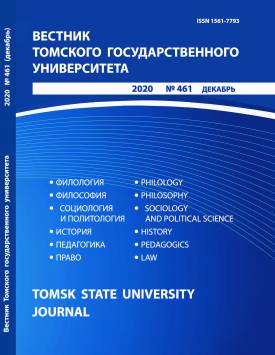Unmanned Aerial Vehicle as a Special Technical and Forensic Tool and an Object of Forensic Investigation
The aim of the article is to conduct a comprehensive analysis of various aspects of the use of the UAV as a modern technical and forensic tool of a universal nature, with the emphasis on the study of the theoretical foundations of its application, legal regulation, organizational, scientific, technical and scientific-methodological support. The main legal framework for the use of UAVs is systematically considered, with the indication of a number of departmental legal acts regulating the use of air space by aircraft belonging to the internal affairs bodies. It is concluded that it is necessary to develop an interdepartmental instruction "On the Procedure for Applying and Using the results of the Unmanned Aerial Vehicle (drone) Use For Forensic Purposes". The main technical parameters of UAVs that are evaluated when the devices are used for forensic purposes are analyzed: the material from which the device is made; the modification of batteries and their capacity; the presence of additional structures; the volume of the payload; the number and characteristics of the engine; the modification of the gyroscope, etc. In the section of scientific and technical support for the use of UAVs, two trends are noted: (1) continuous technical improvement of drone models and (2) development of tools and methods aimed at neutralizing and countering UAVs. In (2) the main ones include: acoustic, laser, microwave, mechanical; anti-drones; electronic security systems, etc. Taking into account the experience of foreign authors, some issues of using UAVs as a means for preparing and committing criminal acts are considered. With the emphasis on the basics of tactics of inspection of the scene, the specifics of its conduct are outlined, taking into account the fixation and removal of traces of the UAV use. It is concluded that, for effective investigation of crimes committed using drones, it is necessary to develop guidelines for the inspection of the area where the drone was used and the inspection of the drone itself. The most typical traces left when using UAVs and further possibilities of their research are considered. The traces are material (in the form of the remains of the drone itself, the device it carries, destruction of objects, video recordings of devices or photographs with them, delivery and launch vehicles, etc.), ideal (in the memory of witnesses and victims), electronic and digital (in the memory of the device or computer from which the UAV was controlled). In the future, electronic-digital traces can be examined when assigning computer-technical expert examination. The conclusions are substantiated about the need for a detailed study of the procedure for using UAVs in law enforcement (in various directions: inspection of the scene, hot pursuit, terrain survey, etc.), of the content of recommendations for preventing the commission of crimes using UAVs, and of forensic investigation of traces of use.
Keywords
unmanned aerial vehicle (UAV), technical and forensic tools, investigation of crimesAuthors
| Name | Organization | |
| Saveleva Marina V. | Saratov State Law Academy | m300kk64@mail.ru |
| Smushkin Aleksandr B. | Saratov State Law Academy; Povolzhie Law Institute of the All-Russian State University of Justice | skif32@yandex.ru |
References

Unmanned Aerial Vehicle as a Special Technical and Forensic Tool and an Object of Forensic Investigation | Vestnik Tomskogo gosudarstvennogo universiteta – Tomsk State University Journal. 2020. № 461. DOI: 10.17223/15617793/461/29
